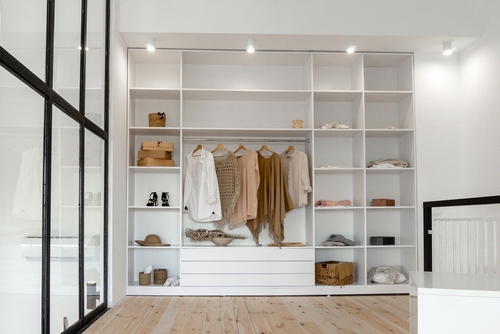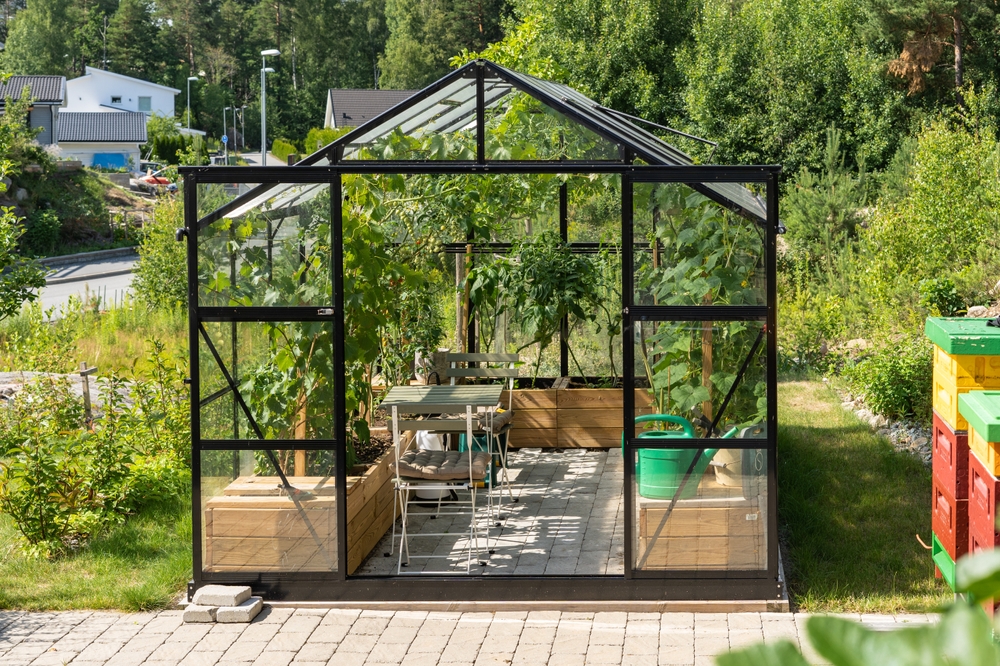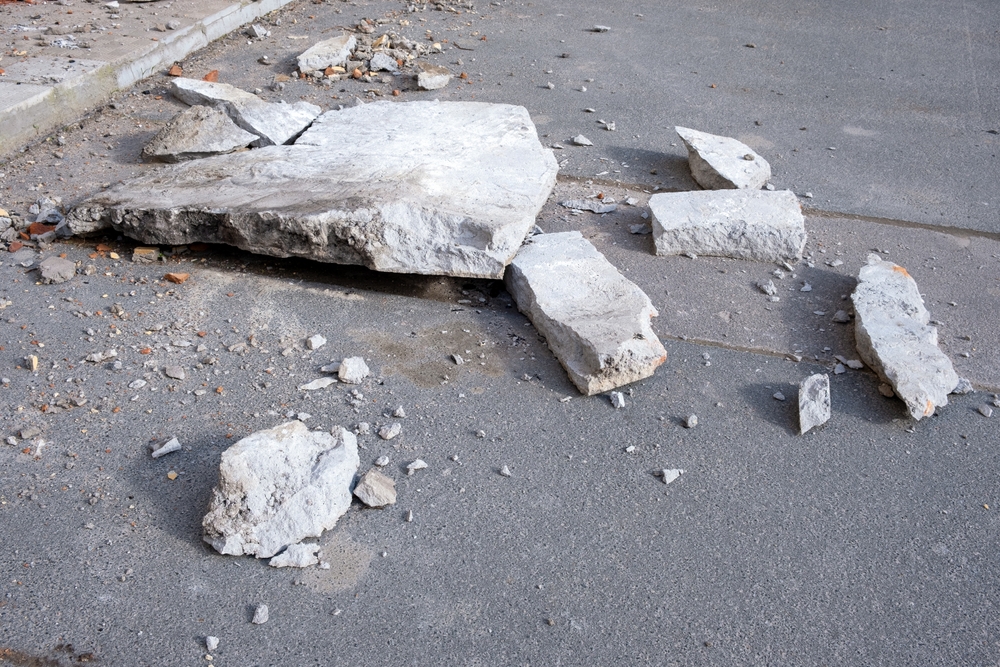May 13, 2024 - Benjamin Ehinger
How to Clean Out Your Closet and Let Go: A Practical Guide to Decluttering
CALL NOW 844-762-8449
Cleaning out your closet is more than just a way to tidy up; it’s an act of renewal and clarity that can transform not only your space but your state of mind. The process of sorting through clothes, assessing their condition and relevance to your lifestyle, and deciding what to keep, can be liberating. It gives you a chance to redefine your style, make room for new fashion finds, and let go of items that no longer serve you. Whether you’re looking to simplify your wardrobe with a capsule collection or just aiming to minimize clutter, the journey to a streamlined closet starts with intention and a plan.
Letting go of clothing can sometimes be difficult, especially when items have sentimental value or if you’re holding onto the idea that you might wear them again someday. However, if your goal is to create a functional and organized closet, it’s crucial to be realistic about what you use and love. By donating, selling, or responsibly discarding pieces that don’t fit, are out of style, or are in poor condition, you make space for items you will actually wear and enjoy. This not only maximizes your closet space but also ensures a curated collection of clothes that fit your current life and style.
 Evaluating the state of your clothing is a crucial step in the cleanout process. It allows you to decide which items to keep, repair, or let go of due to wear and tear or damage.
Evaluating the state of your clothing is a crucial step in the cleanout process. It allows you to decide which items to keep, repair, or let go of due to wear and tear or damage.
 To optimize your closet space and maintain organization, you’ll need to focus on two critical areas: implementing smart storage solutions and using accessories that aid in organization. These strategies ensure that every item has a place, making your closet both functional and aesthetically pleasing.
To optimize your closet space and maintain organization, you’ll need to focus on two critical areas: implementing smart storage solutions and using accessories that aid in organization. These strategies ensure that every item has a place, making your closet both functional and aesthetically pleasing.
 Proper selection and use of hangers are fundamental to closet maintenance. By focusing on durability and your daily habits, you can keep your closet orderly and your clothes in pristine condition.
Proper selection and use of hangers are fundamental to closet maintenance. By focusing on durability and your daily habits, you can keep your closet orderly and your clothes in pristine condition.
 When cleaning out your closet, donating to charity is a generous way to give your clothing a second life. Ensure your items are in good condition and choose reputable organizations that align with your values.
When cleaning out your closet, donating to charity is a generous way to give your clothing a second life. Ensure your items are in good condition and choose reputable organizations that align with your values.
Key Takeaways
- Simplify your wardrobe and embrace a style that reflects your current tastes.
- Donate or sell clothes that no longer serve your needs to keep your closet clutter-free.
- Consistently assess and organize your clothing to maintain a functional wardrobe.
Getting Started with Closet Cleanout
Embarking on a closet cleanout can rejuvenate your space and simplify your choices. The process is not just about removing excess items, but also about creating a more functional and enjoyable wardrobe. Remember, if you’re taking on a larger closet clean out or it’s a part of a whole house decluttering project, using a driveway dumpster rental can be helpful for the junk and trash.Understanding the Benefits of Decluttering
- Decreased Decision Fatigue: The fewer items you have, the easier it is to make decisions about what to wear. Adopting a minimalist approach could reduce the time and energy spent on your wardrobe.
- Enhanced Wardrobe Functionality: By keeping only items that fit well and complement your lifestyle, you express your personal style more effectively.
Setting Goals for Your Closet Purge
- Identify What You Need: Reflect on your current lifestyle and clothing requirements. This will guide your decision-making process as you clean out your closet.
- Visualize Your Ideal Closet: Imagine the ideal state of your closet after the purge. With a clear image in mind, aim for a wardrobe that aligns with your personal style and daily needs.
Creating the Right Environment for a Cleanout
- Organize a Workspace: Clear a space where you can sort items into categories: keep, donate, sell, or discard.
- Assemble Cleaning Supplies: To actually clean your closet, gather necessary cleaning tools such as a duster, vacuum cleaner, and trash bags before you start.
- Allocate Time: Set aside a block of time dedicated to the cleanout, ensuring you can complete the task without interruptions.
Sorting and Categorizing Your Wardrobe
Before diving into the organization of your closet, understand that the key is to distinguish what’s essential and frequently worn from the rarely worn items and to categorize your wardrobe for practicality and ease of use.Distinguishing Between Must-Haves and Rarely Worn
Begin by creating two distinct piles as you sort through each item: one for the must-have basics that you wear regularly, and another for clothes that have rarely seen the light of day. Consider basics like solid t-shirts, versatile denim, and layering pieces as foundational garments that are always in rotation. If you haven’t worn an item in over a year, it’s likely not a staple in your wardrobe.Organizing by Category and Use
Once you have separated your essentials from rarely used items, it’s time to organize your closet more effectively. Start by sorting your clothes into clear categories. For instance:- T-Shirts: Stack or hang together, by color or usage (e.g., casual, workout).
- Denim: Folded on shelves or hung, sorted by color and style.
- Layering Pieces: Group by type (e.g., cardigans, vests, blazers), and hang for easy access.
Assessing Clothing Condition
 Evaluating the state of your clothing is a crucial step in the cleanout process. It allows you to decide which items to keep, repair, or let go of due to wear and tear or damage.
Evaluating the state of your clothing is a crucial step in the cleanout process. It allows you to decide which items to keep, repair, or let go of due to wear and tear or damage.
Identifying Wear and Tear on Garments
Inspect each garment closely for signs of wear and tear. Stains might be removable with the right treatment, but some could be persistent and make the garment less desirable. Look for rips and areas where the fabric is thinning, which can indicate it’s time to retire the item. Discoloration can also occur from sun exposure or laundering, affecting the apparel’s appearance.Deciding What to Mend and What to Recycle
You’ll need to choose between mending or recycling an item. If a garment holds sentimental value or is a staple in your wardrobe, consider whether it is feasible to repair. Simple fixes like sewing a button or patching a small tear might be worth it. For those items that are beyond mending, like irreparably ripped or severely discolored pieces, recycling is a responsible way to let go of clothing, ensuring it doesn’t end up in a landfill.The Art of Letting Go
Initiating a closet purge is a practical step towards clarity and organization in your personal space. The process involves emotional challenges, particularly when you confront items that hold sentimental value or those kept ‘just in case.’ Understand that to successfully purge your closet, you’ll need to navigate these emotional hurdles with a balance of sensitivity and decisiveness.Releasing Sentimental Items
When sorting through your closet, you’ll likely encounter objects that evoke memories and emotions. To ease the release of sentimental items, make a list categorizing clothing and accessories by emotional attachment:- High sentiment: Items with profound personal stories or memories.
- Moderate sentiment: Items that remind you of certain events or people but are not a cornerstone of your past.
Overcoming the ‘Just in Case’ Mindset
The ‘just in case’ mindset often impedes the ability to effectively purge your closet. It’s crucial to evaluate the real probability of needing each item. Ask yourself:- When was the last time I used this?
- Is this item replaceable if I do indeed need it in the future?
- Do I own something else that can serve the same purpose?
- Imminent use: Items you have used in the past 3 months or are certain you will use in the upcoming season.
- Unlikely to use: Items that haven’t seen daylight in over a year or don’t fit current lifestyle needs.
Maximizing Closet Space and Organization
 To optimize your closet space and maintain organization, you’ll need to focus on two critical areas: implementing smart storage solutions and using accessories that aid in organization. These strategies ensure that every item has a place, making your closet both functional and aesthetically pleasing.
To optimize your closet space and maintain organization, you’ll need to focus on two critical areas: implementing smart storage solutions and using accessories that aid in organization. These strategies ensure that every item has a place, making your closet both functional and aesthetically pleasing.
Implementing Effective Storage Solutions
Drawer Organizers: Begin by sorting small items into drawer organizers. This will prevent clutter and make it easier for you to find what you need. Items such as socks, underwear, and accessories benefit greatly from being compartmentalized. Stacking Trays: For items that can’t be hung, stacking trays work wonders. You can use them to store items flat and make them easily accessible. This is particularly useful for sweaters and jeans, which can take up a lot of space when hung or folded on shelves.Utilizing Accessories to Enhance Organization
Shoe Organizers: A hanging shoe organizer on the back of your closet door or a shoe rack on the floor can immediately free up shelf space. Your shoes will be neatly paired, visible, and off the floor. Hooks: Don’t underestimate the power of hooks. They can be installed on unused wall space or behind the closet door to hang hats, bags, or scarves. This turns what would be dead space into useful storage areas. By taking these steps, you transform your closets into highly efficient storage spaces. Remember to regularly reassess your organization system to ensure it continues to meet your needs.Implementing a Capsule Wardrobe
Building a capsule wardrobe revolves around selecting a limited number of versatile and timeless pieces that can be mixed and matched with ease. The goal is to maintain a minimalist approach that simplifies your daily dressing routine while ensuring you always have something suitable to wear.Choosing Versatile and Timeless Pieces
To create a foundation for your capsule wardrobe, prioritize items that offer versatility and longevity. Choose classic pieces like a tailored blazer, well-fitted denim, simple T-shirts, and a little black dress. These should be in neutral colors such as black, white, or navy, serving as the backbone for numerous outfits.- Key Tops: A crisp white button-down, a breton striped tee, and a selection of solid colored knitwear.
- Essential Bottoms: Slim-fit trousers, dark-wash jeans, and a classic pencil skirt.
- Shoes: A pair of black heels, comfortable flats, and white sneakers.
- Outerwear: A trench coat for transitional weather and a wool coat for colder months.
Maintaining a Minimalist Approach
Embrace a minimalist capsule wardrobe by keeping the number of items to a minimum. This involves strict editing of your closet and resisting the temptation to add too many pieces. Consistency is key; stick to a cohesive color palette that allows you to create multiple outfit combinations. A good rule of thumb is to limit your wardrobe to roughly 30 to 40 pieces, including shoes and outerwear. Do:- Regularly assess each item’s relevance and usage.
- Donate or sell pieces that no longer fit or haven’t been worn in over a year.
- Buy on impulse. Consider how new purchases fit within your existing collection.
- Overlook the importance of quality. Durable clothing reduces the need for frequent replacements.
Hangers and Maintenance
 Proper selection and use of hangers are fundamental to closet maintenance. By focusing on durability and your daily habits, you can keep your closet orderly and your clothes in pristine condition.
Proper selection and use of hangers are fundamental to closet maintenance. By focusing on durability and your daily habits, you can keep your closet orderly and your clothes in pristine condition.
Selecting Quality Hangers
When shopping for hangers, consider velvet hangers for their slim profile and non-slip surface which are ideal for delicate items and maximizing space. Ensure that the hangers you choose can support the weight of heavier garments without bending or breaking. Look for features like:- Swivel hooks for easy orientation
- Notches for dresses and tank tops
- Contoured shoulders to maintain the shape of your clothes
Daily Habits for Closet Tidiness
Establish these habits to keep your closet organized:- Consistent Hanger Use: Only return clean clothes to your closet, and immediately hang them on their designated hangers.
- Hanger Direction: Face all hangers in the same direction to streamline the look and functionality of your space.
- One in, One out Policy: When acquiring a new piece of clothing, consider donating an older one to avoid overcrowding.
Selling and Consigning Unwanted Items
When cleaning out your closet, you can turn unwanted items into cash by choosing the right online platforms or local consignment stores. The key is to understand where your items will be most valued and how to navigate the selling or consigning process effectively.Finding the Right Platforms to Sell Clothing
Choosing where to sell your clothing depends on the type of items you have. For designer wear or trendy fashion, platforms like Poshmark offer a community of fashion-forward buyers. For a diverse audience, Facebook Marketplace is a convenient avenue, as it offers a broad local reach and isn’t limited to just clothing. Here are some steps to get started:- Assess the item: Is it a brand-name, vintage, or a generic piece of clothing?
- Select the platform: Higher-end items do well on niche sites, while everyday wear may sell better on broader platforms.
- Create a listing: Include clear, well-lit photos and detailed descriptions of your items.
Understanding Consignment Store Processes
Consigning is different from selling outright. You’ll provide your items to a consignment store, which will sell them on your behalf. Consignment stores pay you a percentage of the sale price. Here’s a straightforward approach:- Research: Look for local consignment stores with good reputations or specialized online consignment options.
- Prepare your items: Ensure clothes are clean and in good condition. Some stores may require items to be in-season.
- Understand the terms: Know the percentage you’ll receive and how long the store will hold your items before they return unsold ones to you.
Donating to Charity
 When cleaning out your closet, donating to charity is a generous way to give your clothing a second life. Ensure your items are in good condition and choose reputable organizations that align with your values.
When cleaning out your closet, donating to charity is a generous way to give your clothing a second life. Ensure your items are in good condition and choose reputable organizations that align with your values.
Selecting Charities for Clothing Donations
Research charities thoughtfully to find one that matches your intention for the donation. Goodwill and The Salvation Army are well-known options that sell donated clothing to fund various community programs. Savers is another establishment that accepts clothing donations to support nonprofits. Consider local shelters or nonprofit thrift stores as well, since these can be more directly impactful in your community. Make sure the charity is reputable and provides clear guidelines on what they accept.Preparation of Items for Donation
Before you donate, inspect each item to ensure it’s clean and in good condition—charities can’t use clothing with stains or damage. Sort your clothing into categories such as tops, bottoms, outerwear, and formal; this makes the processing easier for the donation center. Fold the clothes neatly and place them into boxes or bags. Items from your keep pile that no longer fit or haven’t been worn in over a year are prime candidates for donation. Remember, if you value the item enough to keep it, others may find it just as valuable.Staying Organized and Avoiding Clutter
When you’ve finished decluttering, it’s key to maintain that clarity and order in your closet. An effective way to do this is by organizing items into categories and labeling each section. Here’s how you can keep your closet tidy: Identify What You Have- Sort items by type: shirts, pants, accessories.
- Use bold labels to mark where each category belongs.
- Declutter seasonally to keep items current and avoid accumulation of trendy items that may go out of style.
- Install shelving or cubbies with labels for a more structured arrangement.
- Keep track of what you own to avoid buying duplicates. When purchasing new items, consider if you already have something similar.
- Regularly review your belongings and decide whether to keep, donate, or discard.
- Employ the one in, one out rule: for every new item, remove one.
- Straighten up daily. Hang clothes back and fold items neatly.
- Make decisions immediately—put laundry away instead of leaving it on a chair.
Frequently Asked Questions
When tackling the task of a closet clean-out, it’s important to note that having a systematic approach is key to efficiency. Specific challenges such as time constraints and emotional attachments can also play a role. This section aims to address common queries with straightforward advice for a successful wardrobe decluttering.What is the best method to declutter your closet effectively?
An effective decluttering method for your closet involves removing everything from the space first, then sorting items into categories such as keep, donate, or discard. Make decisions based on the item’s fit, wearability, and your emotional attachment to it. Following steps from guides on cleaning out your wardrobe and keeping it tidy can streamline the process.What items should be discarded when purging your wardrobe?
Items to discard include clothing that no longer fits, is damaged beyond repair, or hasn’t been worn in over a year. Also, consider parting with items that do not match your current style or lifestyle. Tossing ripped, stained, and discolored pieces is a straightforward way to make space in your closet.Can you provide an efficient checklist for cleaning out a closet?
Certainly. Start by gathering supplies like trash bags and storage boxes. Empty your closet entirely, then clean every part of the interior. Sort clothes into keep, discard, or donate piles. Organize what remains according to category or color and rehome items thoughtfully back into your closet. Remember to plan what to do with unwanted clothes.How can you tackle a closet clean-out in a short time, like 15 minutes?
In 15 minutes, focus on the easy decisions. Quickly sift through items, picking out and removing those you haven’t worn recently or that no longer fit. This quick purge will clear space and make a more detailed organization easier later.What are the key principles from Marie Kondo’s method for closet organization?
Marie Kondo’s method emphasizes keeping items that spark joy, organizing clothes so that each piece is visible, and folding items compactly to save space. Streamline your closet with the philosophy of owning things that contribute positively to your life.How can one detach emotionally when clearing out old clothing?
Start by acknowledging your emotional attachment to the items. Remind yourself of the benefits of decluttering, such as reducing stress and creating an organized space. Consider the memories associated with the clothing and take photos if it helps, but then allow yourself to let go of items that no longer serve your current needs.RECENT BLOGS
Our Reviews
Glenda Lanier Prowell
1721758635
I have ordered an 11 yard dumpster to be delivered to my house.Lonier was extremely helpful and answered all my questions. The rate was very reasonable.
Cedric Smikle
1721660395
Amber was extremely professional and courteous. She answered all of my questions and even some that I didn’t know I needed to ask.
Cait Kaider
1721243051
I highly recommend Waste Removal USA for their responsiveness and how the staff work hard to provide exceptional customer service. They have done well by us and our clients. Thank you!
Easom Family
1721223306
Louiner Pierre-Louis Is awesome! Did a great job. Will definitely be using this same company for all my dumpster needs because of his awesome customer service! Thank you!!!
tabitha Vazquez
1720539988
Wonderful and fast customer service!
LATEST BLOGS






